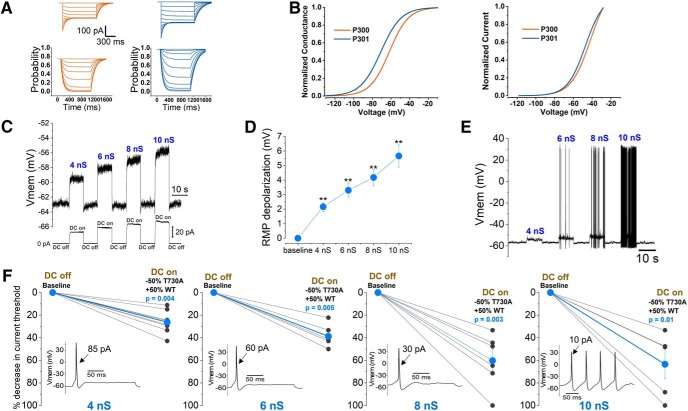Figure 5.
Dynamic clamp recordings confirm that KV7.2-T730A IM reduces the excitability of iPSC-SNs derived from P301. A, Current traces obtained from KV7.2-WT IM and KV7.2-T730A IM model. Currents were evoked from −110 to −20 mV from a holding potential of −20 mV. Time sequence of n variable obtained in the model (bottom panels) in response to a series of voltage steps ranging from −110 to −20 mV. B, Left, Comparison of steady-state activation of the kinetic model of KV7.2-WT IM (orange) and KV7.2-T730A IM (blue). Right, Normalized I–V relationship from P300 (KV7.2-WT IM; orange) and P301 (KV7.2-T730A IM; blue) models. C, An example membrane potential response of a P301 neuron to substituting the T730A IM with WT IM (−50% T730A IM, +50% WT IM) at increasing amounts of conductance, based on the values from extrapolated data of the maximum IM value in iPSC-SNs in Figure 5-1. D, Average response of P301 iPSC-SNs to the protocol from C (n = 5–8). E, Example trace showing spontaneous firing of a P301 iPSC-SN in response to the protocol from C. F, Substituting the T730A IM value with WT IM (−50% T730A IM, +50% WT IM) at increasing amounts of conductance in P301 neurons results in significant reduction in current threshold. Insets show the responses of a representative neuron at each conductance. **p < 0.01.

